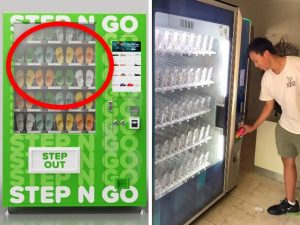Decentralisation a key issue in Victorian state election

Decentralisation has emerged as a key issue for Victoria’s commercial property sector in the upcoming state election.
REA chief economist Nerida Conisbee says the major parties’ differing approaches to decentralisation – along with plans for job creation, the planning system and infrastructure – will be closely scrutinised by commercial property owners, as each will have a lasting impact on the sector.
“Looking at the policies announced to date, there is clearly a focus on getting commercial activity out of central areas and into suburban and regional areas,” Conisbee says.
“This makes sense given how big Melbourne is becoming and it’s an acknowledgment that having the majority of people employed in the centre just isn’t all that efficient. By encouraging decentralisation, it will eventually allow people to have smaller commutes.
“If you look at Sydney, it already has a more decentralised approach; Melbourne does not. Yes, there are a few hubs of commercial activity across the city, but you can’t confidently name the ‘second CBD’ in Melbourne … because there isn’t one.”
Labor’s policies – which include a much-hyped $50 billion outer-suburban rail loop from Cheltenham to Werribee, via Tullamarine airport, including new stations at Doncaster, Melbourne airport and La Trobe, Deakin and Monash universities – appear to be “pushing more for suburban decentralisation”, Conisbee says.

An expanded train network is a central infrastructure promise of the Labor Party. Picture: Getty
“I’m a fan of the outer suburban rail loop, as it opens up a lot of existing commercial areas, as well as university precincts that have otherwise been more difficult to get to.
“And while the lead time on such a huge project is long (the loop won’t be finished until 2050), major government investment like that will always have a flow-on effect,” she says. Conisbee expects multiple “middle ring suburbs” to feel positive impacts if the loop is built.
The Liberal and National parties, on the other hand, are “looking more to pushing activity to regional areas, particularly Geelong”, Conisbee notes.
Regional hub: Geelong Quarter precinct design revealed
The LNP would have a Minister for Geelong – in recognition of the bayside city’s importance to the state – as well as a Minister for Decentralisation. They also want to further develop the Geelong Waterfront in a major redevelopment inspired by Greece’s second-largest city, Thessaloniki.
“Any specific investment in an area like that is big and will make a difference on the ground. Geelong is clearly one of the main beneficiaries,” Conisbee says.
“We are already seeing Geelong reap the benefits of federal investment from the last Budget, with more people moving there and better road networks. It seems the state Liberals are looking to support the city in a similar way.”
The LNP has also pledged $19 billion for a regional fast rail and talked about how it would slow down population growth in Melbourne.

Labor leader Daniel Andrews is seeking another term as Victorian premier. Picture: Getty
Both parties are looking to appease the commercial property sector with big-ticket promises, Conisbee says.
“While it depends on your specific investments, there’s a few fundamentals commercial property owners are looking for. Job creation is of course important, as it’s a driver of the economy, they’re looking for how to make the planning process less difficult, and major infrastructure which drives investment is key.”
Both parties are attempting to cater to those needs, she says. “We’re seeing both wanting to invest in things which will help Victoria to continue to grow and that’s ultimately what commercial property owners want; a strong economy.”







